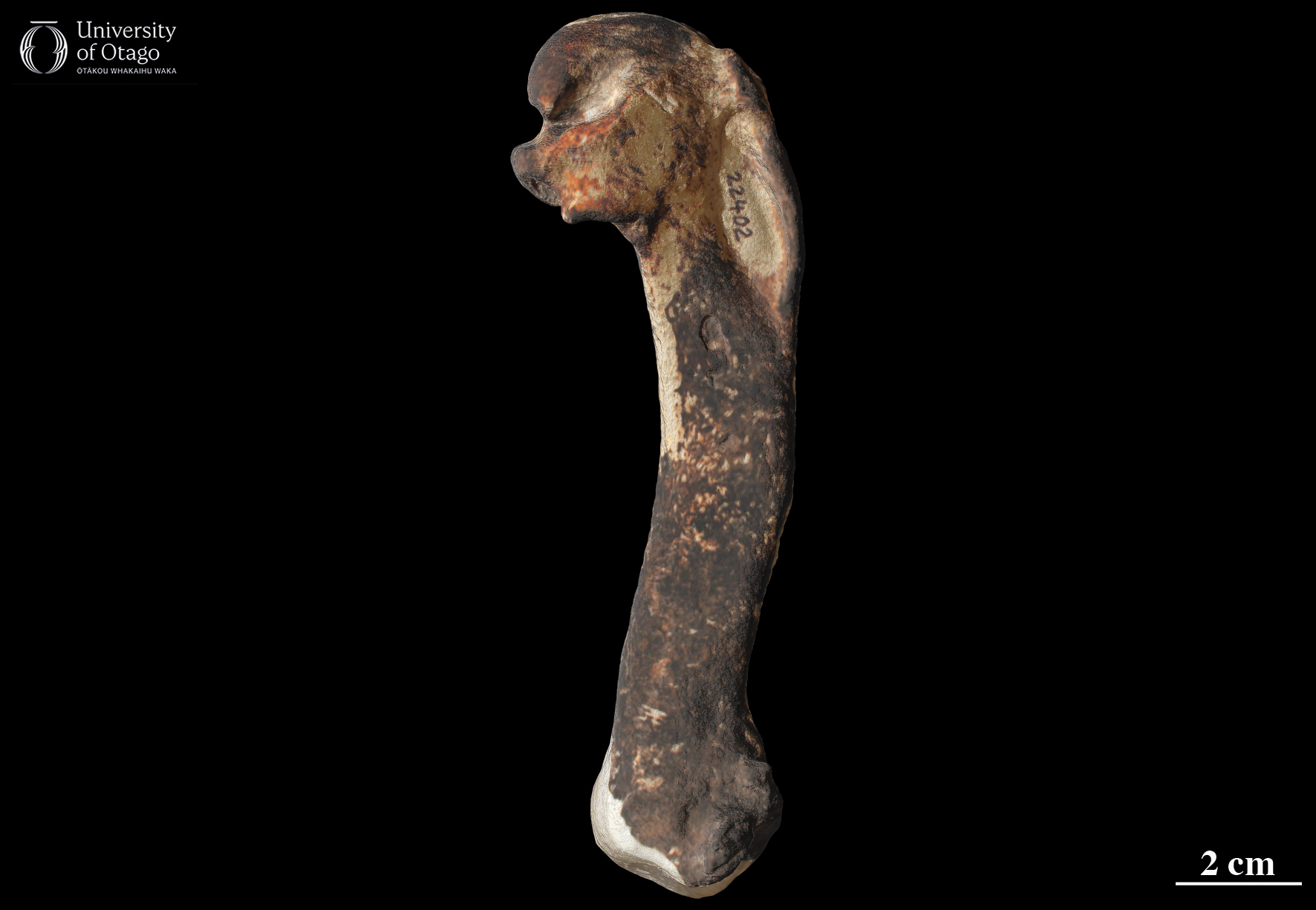17 Without this one bone we wouldn’t know Maxwell’s penguin ever existed
Aves, Sphenisciformes: Kaiika maxwelli
For birds and many other groups it is unusual for researchers to propose a new scientific name for a species when only a single specimen from one individual animal is known (e.g. one bone). This is because a scientific name is an hypothesis, and must therefore be able to be proven wrong. For an example of why a scientific name is an hypothesis, consider that if the bone that a new species is named from is shown to belong to an already-named species, then the hypothesis that the bone represents a new species is rejected. Also, it should be possible to show that any other newly discovered bone belongs to that newly described species if that is indeed the case. An individual fossil bone needs to be both distinctive and sufficiently important for researchers to propose it has come from a species that is new to science. Which is what happened with the description of Maxwell’s penguin Kaiika maxwelli.

Wing bone (humerus) from the fossil penguin Kaiika maxwelli (specimen OU 22402). This humerus bone is slightly S-shaped, which is different to the straight humerus bones of penguins living today. This image is a 3D scan of the fossil and not a photograph. Image credit: DB Thomas. |
In the spring of 1998, Phillip (Phil) Maxwell and Ewan Fordyce were searching for fossils along the banks of the Waihao River in South Canterbury when the former found a concretion that was around 30 cm in diameter. He split the concretion into two clean halves using a hammer, revealing a natural mould of a single bone along with a small amount of the original bone material. At the time of discovery these researchers didn’t fully realise that they were holding one of the oldest fossil penguin bones that had ever been found, confirming that fossil penguins were living in Zealandia during the early Eocene (between 56 and 52 million years old). This was because they were uncertain about the age of the fossil, and the bone itself had a markedly different shape to other penguin fossils that had been described. The concretion was transported back to the University of Otago for storage in the Geology Museum collections.
By 2009 the significance of the fossil had become clear. Geology Museum paleontology preparator Andrew Grebneff was tasked with removing the remaining bone from the concretion, reattaching the halves of the concretion together, filling the void space with epoxy, and exposing the resulting cast.
The cast was revealed as the uppermost bone (i.e. humerus) from the wing of a penguin that would have been similar in size to a modern emperor penguin Aptenodytes forsteri, the largest penguins living today. Aspects of the shape of the fossil humerus had never been seen before in a bone that was so large, and no other penguin fossils had been reported from sediments of this age in the southern Canterbury Basin. For these reasons, researchers were confident that the fossil bone was from an entirely new species, and was distinct enough for future comparisons. This very situation would arise around ten years later with the description of the fossil penguin Petradyptes stonehousei. The humerus from Petradyptes stonehousei is most similar in shape and size to the fossil penguin that Dr Maxwell had discovered, but is nevertheless clearly distinguishable.
The fossil penguin bone from the banks of the Waihao River was named in honour of Phillip Maxwell as Kaiika maxwelli. The article describing the fossil appeared in a special issue of the New Zealand Journal of Geology and Geophysics in 2011 dedicated to Dr Maxwell and the major contributions he had made to New Zealand paleontology across his career.
—Written by Daniel B Thomas
| Specimen number: OU 22402 | Age: Approximately 53 million years old (early Eocene, Waipawan or Mangaorapan stage) |
| Locality: Waihao River, Canterbury | Rock Formation: Kauru Formation |
| Collected by: P Maxwell | |
| Citation: Fordyce RE, Thomas DB. 2011. Kaiika maxwelli, a new Early Eocene archaic penguin (Sphenisciformes, Aves) from Waihao Valley, South Canterbury, New Zealand. New Zealand Journal of Geology and Geophysics 54:43–51. doi.org/10.1080/00288306.2011.536521 | |
A proposed explanation which can be tested and proven false.
Evidence of life from a past geological age. Remains like bones, shells or wood, or an impression like a footprint, or some other evidence of life, from something that was alive more than 11,700 years ago.
Sedimentary rock cemented into a solid structure through the gradual precipitation of minerals into the pore spaces between sedimentary grains.
An impression of part of an organism preserved in sediment.
Penguins. An order of seabirds with around 20 living species in a single family (Spheniscidae). Many more extinct species of penguin are known compared with the number of living species.
The mostly submerged continent of which New Zealand and New Caledonia are a part.
56.0 to 48.07 million years ago. The late Eocene is more formally known as the international Ypresian Stage.
The bone in the forelimb of a vertebrate (i.e. wing, arm, flipper) that connects with the shoulder.
A sedimentary basin on the South Island of New Zealand.

